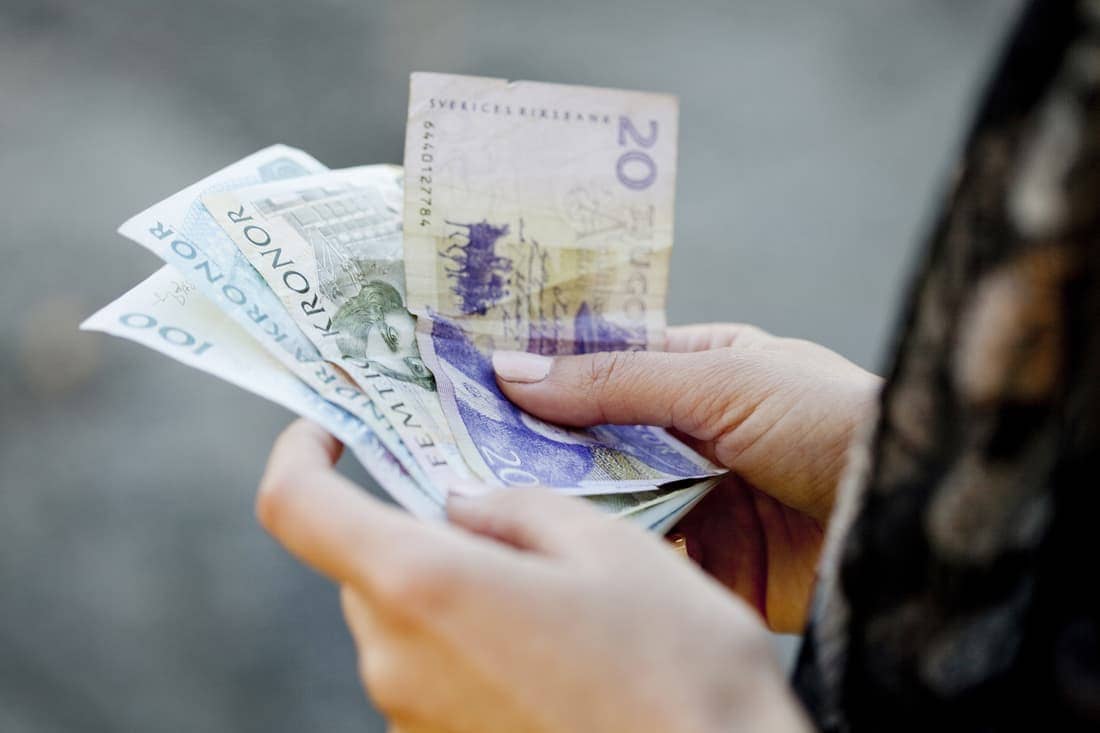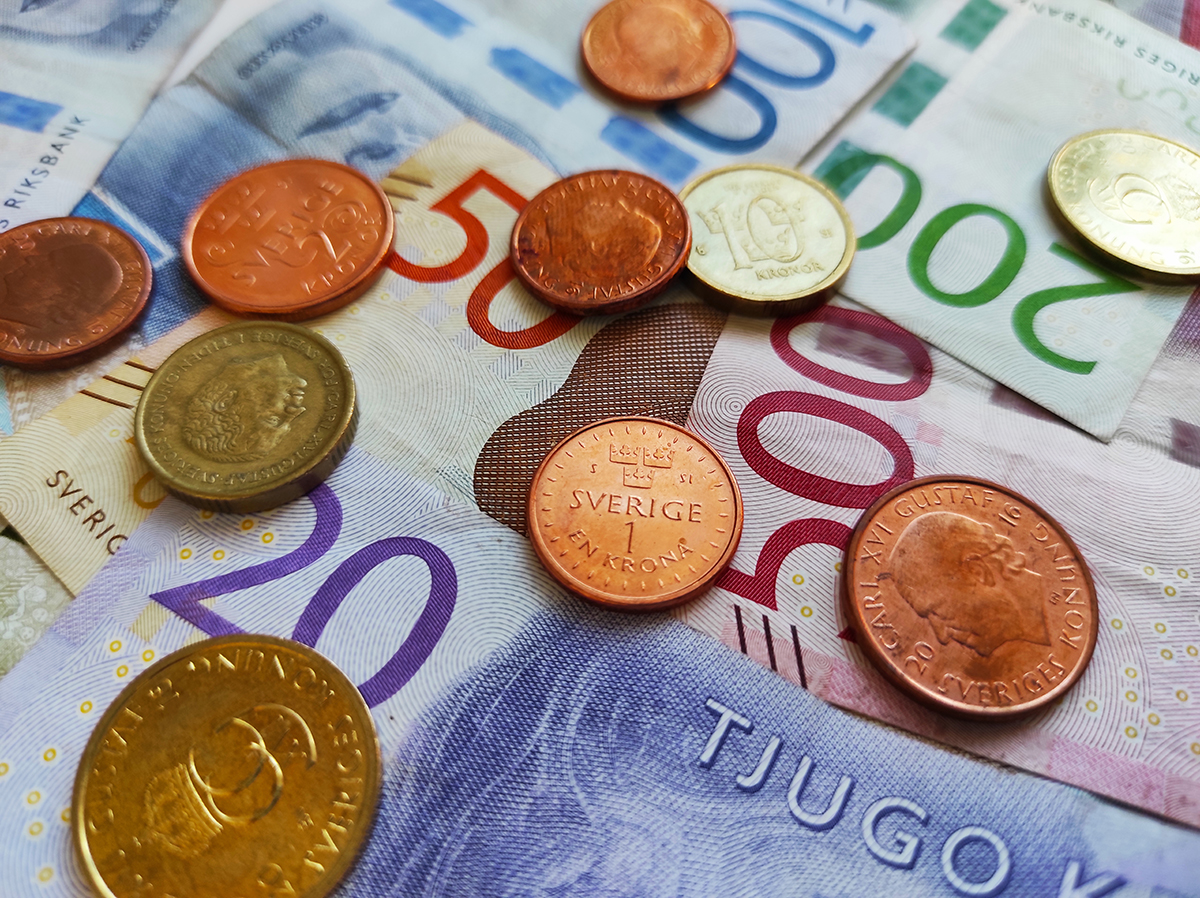Swedish Currency Guide: Swedish Krona (SEK) Up Close
If you’re planning a trip to Sweden, investing in foreign currencies, or expanding your global collection, understanding the Swedish krona (SEK) is essential. Sweden’s currency stands as a symbol of both Nordic heritage and modern innovation, a reflection of a nation that balances centuries-old tradition with one of the world’s most advanced digital payment systems.
At US First Exchange, your trusted source for foreign exchange, we make it easy to buy and sell global currencies, including the Swedish krona, with secure shipping, competitive exchange rates, and zero uncertainty. This guide covers everything you need to know about the Swedish currency – its history, design, current usage, and practical tips for handling Swedish money.
A Brief History of the Swedish Krona
The Swedish krona, which translates literally to Swedish crown, was introduced in 1873 as part of the Scandinavian Monetary Union (SMU) and replaced the riksdaler. The SMU linked the currencies of Sweden, Denmark, and Norway under a shared gold standard, meaning each nation’s currency was backed by gold and could be exchanged at a fixed rate. One Swedish krona equaled 1/2480 of a kilogram of pure gold.
Even after the gold standard was abandoned in the early 20th century, the krona remained Sweden’s official fiat currency. It was later tied to the British pound, US dollar, Deutsche mark, and a currency basket, with the Riksbank tightly controlling the appreciation and depreciation of the currency. Unlike neighboring Denmark and Norway, Sweden decided not to join the European Union’s common eurozone, keeping its national currency.
The Sveriges Riksbank (the central bank of Sweden) – founded in 1668, making it the world’s oldest central bank – oversees the krona and Sweden’s broader monetary policy.
Swedish Currency Today: Exchange Rates & Monetary Policy

Sweden’s monetary policy aims to maintain price stability and low inflation. The Swedish krona remains one of the most stable and respected currencies globally, thanks to Sweden’s robust economy and prudent fiscal management. In currency rankings, the SEK performs solidly among developed nations. The krona is a fiat currency that has been free-floating since 1992 and responsive to economic indicators, interest rates, and global trade flows.
The krona’s exchange rate fluctuates against the US Dollar and the euro based on market forces, trade balances, and global investor confidence. As a result of a good monetary policy and a relatively stable economy, the Swedish krona is considered a safe-haven currency – one expected to maintain its value or even appreciate in times of market uncertainty. When converting SEK to USD, or vice versa, however, remember that market conditions shift daily.
For investors and travelers involved in cross-border payments, staying updated on rate trends is crucial. US First Exchange provides up-to-date market data to help you make informed currency decisions. Always verify real-time exchange rates using our currency converter to see how far your money goes. You can sign up for currency exchange alerts to get notified when the rates move in your favour and act fast.
Ready to sell?
Are you ready to sell your currency? Stop waiting and request a Shipping Kit. We will provide everything you need to ship and receive funds for currencies you own.
Swedish Currency Overview
Here are the key details of the Swedish currency:
| Feature | Description |
|---|---|
| Official Name | Swedish krona (plural: kronor) |
| ISO Code | SEK (as defined under ISO 4217) |
| Symbol | kr |
| Subunit | 1 krona = 100 öre (though the öre coins were discontinued in 2010) |
| Central Bank | Sveriges Riksbank (Central Bank of Sweden) |
| Type | Fiat currency |
| Common Nicknames | spänn, bagis (slang terms used by locals) |
| Currency Rankings | The krona consistently ranks among the top 30 most-traded currencies worldwide |
As of 2025, the average exchange rate is around 1 USD = 10.6 SEK. However, currency rates fluctuate daily, so it's best to use our online currency converter to track the latest SEK to USD rates in real time and see how far your US Dollars go at a given moment to find the most favorable time to exchange USD to SEK or SEK to USD.
Swedish Krona Banknotes and Coins in Circulation
Sweden’s cash system is elegant and practical, with designs that celebrate Swedish culture, art, and history.
SEK Banknotes
During the period 2010–2017, the Riksbank implemented an extensive changeover of banknotes and coins. The current banknote series, introduced between 2015 and 2016 by Sveriges Riksbank, features some of Sweden’s most influential figures:
| Denomination | Portrait | Reverse Design Theme |
|---|---|---|
| 20 kronor | Astrid Lindgren | Vimmerby landscapes and children's literature motifs |
| 50 kronor | Evert Taube | Swedish west coast and sailing imagery |
| 100 kronor | Greta Garbo | Stockholm and classic Swedish cinema |
| 200 kronor | Ingmar Bergman | Fårö Island and film artistry |
| 500 kronor | Birgit Nilsson | Opera and performing arts motifs |
| 1,000 kronor | Dag Hammarskjöld | Swedish Lapland and themes of peace and diplomacy |
The Riksbank is responsible for issuing all Swedish krona notes and coins, destroying worn-out ones, and redeeming all invalid Swedish banknotes, regardless of their age. The fee for redemption is SEK 200 per application. Coins that are no longer legal tender, on he other hand, cannot be redeemed. They can be regarded as scrap metal and left for metal recycling at local banks, unless they are collectibles.
Security Details
Each Swedish banknote integrates advanced security features to prevent counterfeiting, including:
- Color-shifting inks
- Watermarks
- Security threads
- Microtext
- Transparent holograms
- Intaglio printing for tactile recognition
These security details make Swedish notes among the most secure in Europe and help identify false or invalid notes.
SEK Coins
Current Swedish krona coins in circulation that are legal tender include:
- 1 krona
- 2 kronor
- 5 kronor
- 10 kronor
All coins are made of copper, nickel, or brass alloys and bear the effigy of King Carl XVI Gustaf, Sweden’s current monarch, on the obverse side.
Historical and Collectible Swedish Kronor Series
Collectors will appreciate the rich lineage of Swedish currency designs over the years. Older issues, especially those depicting King Charles XI, King Gustav VI Adolf, and early designs inspired by figures like Gustav Vasa and Olaus Magnus, are highly sought after.
Some notable older collectible Swedish krona (SEK) series that circulated before the current “Cultural Journey” series (introduced in 2015–2016) include:
- 1960s-1980s notes featuring royal portraits of historical monarchs mentioned above, allegorical figures, and ornate patterns typical of 19th-century design, such as early 10-krona notes with a portrait of King Oscar II, elaborate guilloche backgrounds, and formal typography.
- Early 20th-century 1986-2008 notes issued before the krona exchange reforms, known for bold, modernist artwork and depictions of some of Sweden’s most iconic cultural and scientific figures such as Jenny Lind, a famous opera singer often called the “Swedish Nightingale”; Selma Lagerlöf, the Nobel Prize–winning author of The Wonderful Adventures of Nils; Christopher Polhem, the innovative engineer, and more.
- Several redesigns and security updates were introduced to prevent counterfeiting, while older motifs remained largely the same, such as the updated Selma Lagerlöf 20-krona with color-shifting ink (1997) or the modified Carl Linnaeus 100-krona with a new watermark and holographic strip (2001).
Modern Day SEK: Sweden’s Move Toward a Cashless Society
Sweden is a global leader in digital payment practices. While cash remains legal tender, it’s increasingly rare to see it used for daily transactions. In fact, fewer than 10% of Swedes use cash regularly.
Mobile Payments and Cashless Transactions
Mobile apps like “Swish” and “Klarna” dominate Swedish commerce. These systems make mobile payments and cashless transactions effortless for locals. Retailers, restaurants, and even street vendors often prefer credit or debit cards over cash.
Sweden’s cashless society reflects its broader national identity rooted in efficiency, innovation, and digital trust. However, some rural locations and small establishments still accept cash – a reminder that the krona remains resilient despite the shift to digital payment methods.
Using Money in Sweden: Traveler Tips
If you’re visiting Sweden, understanding how to handle Swedish money can save you time and fees.
Buy Your Swedish Kronor Before You Go
While ATMs and currency exchange services are available in airports, train stations, and major cities, they often charge high service fees and offer poor exchange rates. Your local bank might apply additional foreign transaction transfer fees, and most don't trade Swedish currency. To avoid surprises, it’s best to buy Swedish kronor before your trip for cross-border payments.
Through a registered and licensed online exchange platform like US First Exchange, you can buy SEK online securely, enjoy competitive exchange rates, and receive your currency via insured delivery in 24-28 hours with no hidden fees. You can even sign up for our exchange rate alerts to lock in the best deal when the market moves in your favor.
Payment Methods Accepted in Sweden
Sweden is one of the most card-friendly countries in the world. You can pay virtually anywhere with credit or debit cards. Just make sure your card supports chip and PIN technology. Contactless and mobile payments are widely accepted, and many establishments prefer them over cash. However, keep in mind that using foreign cards abroad often comes with additional international money transfer costs.
Banks and card issuers may charge a foreign transaction fee, apply an unfavorable exchange rate, or add a service fee for every purchase. Some terminals also default to converting prices into your home currency using dynamic currency conversion, which typically offers poor rates compared to official market values. That’s why it’s smart to get some Swedish kronor in cash before you travel.
Having local currency on hand helps you avoid unnecessary fees, ensures you always get fair value, and makes it easier to handle smaller purchases, like public restrooms, street food, or local markets. With US First Exchange, you can buy Swedish Krona in any amount securely online at competitive exchange rates and choose your payout method.
Are Euros Accepted in Sweden?
No, despite being a member of the European Union, Sweden does not use the euro as its national currency. The Swedish krona is the only legal tender in the country, so you will not be able to use the euro, USD, or any other foreign currency. Some tourist hotspots may occasionally accept euros, but it’s rare and the rates are often unfavorable. Always pay in Swedish kronor for the best value.
When buying or selling Swedish kronor through US First Exchange, you can select convenient payout methods, such as direct doorstep delivery, bank, or wire transfer. Every transaction is secured, insured, and handled with transparency.
Local Tipping Culture
Tipping in Sweden is modest and optional. Most Swedes round up to the nearest 10 kronor at restaurants or leave a 5–10% tip for exceptional service. Tips can be added via card as well.
Buy or Sell Swedish Krona Online at US First Exchange
The Swedish currency embodies Sweden’s unique balance between history and innovation. From its origins in the Scandinavian Monetary Union to today’s shift toward a cashless society, the krona has remained a cornerstone of national identity and economic resilience.
Whether you’re exchanging Swedish crowns for travel, trade, or collecting, US First Exchange, your gateway to global currencies, gives you the power to do it quickly, securely, and from the comfort of your home. Track SEK to USD rates in real time, lock in the best deals, and experience a safe and profitable online Swedish currency exchange.
Ready to buy?
Are you ready to buy your currency? Stop waiting and request a Shipping Kit. We will provide everything you need to ship and receive funds for currencies you own.


